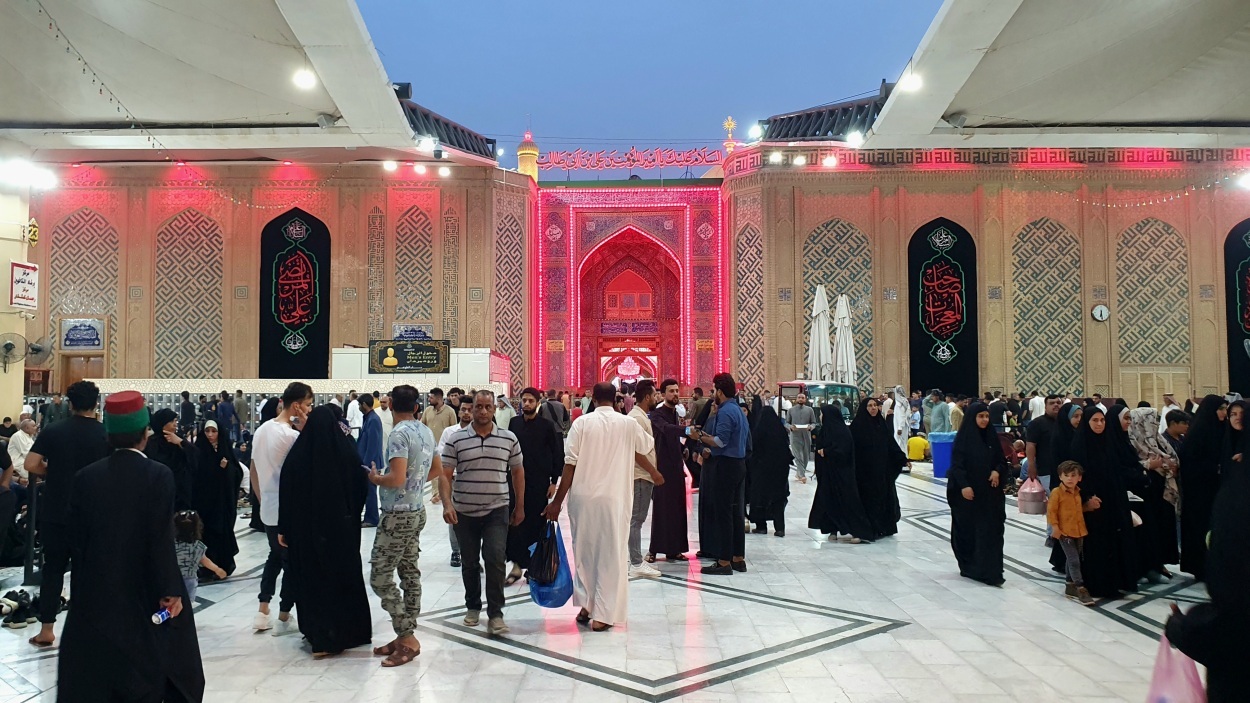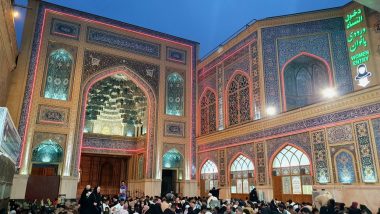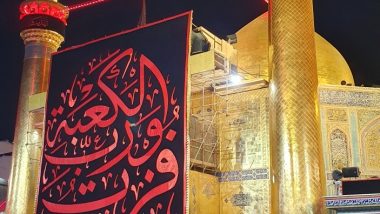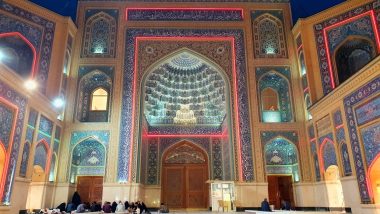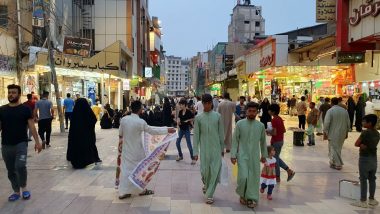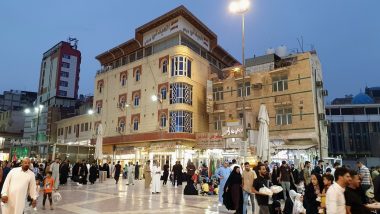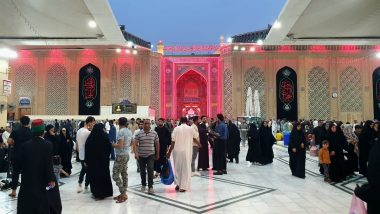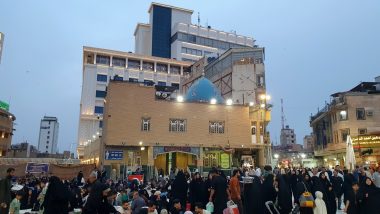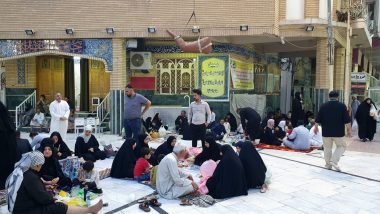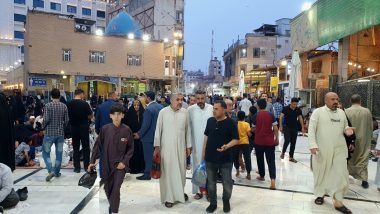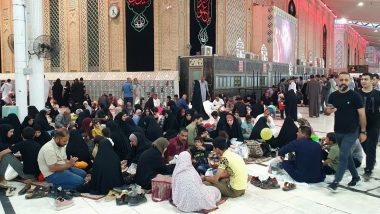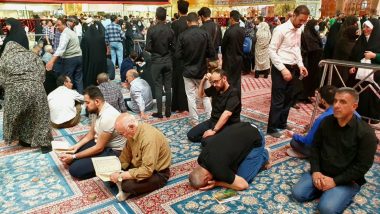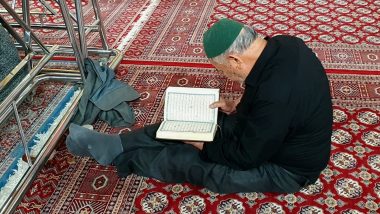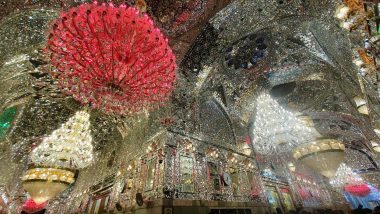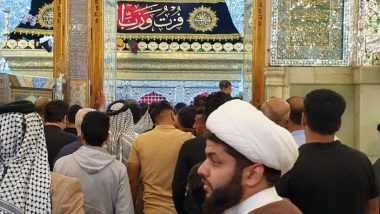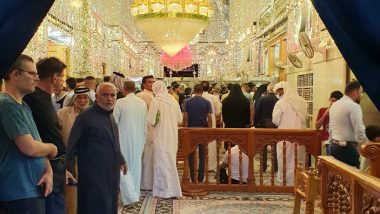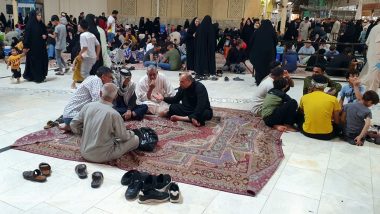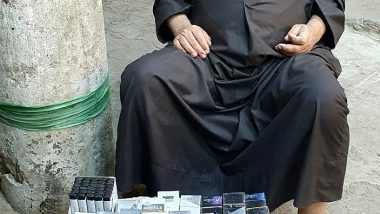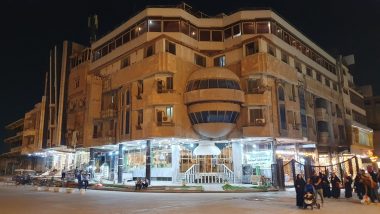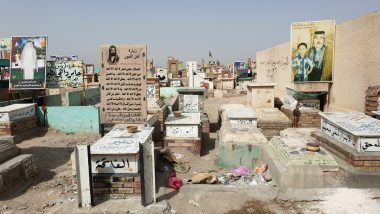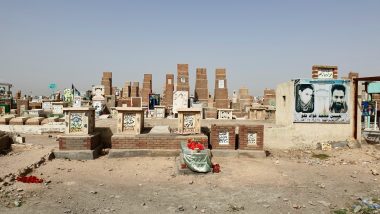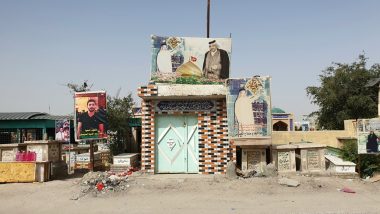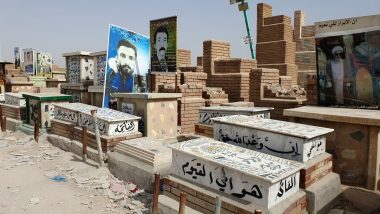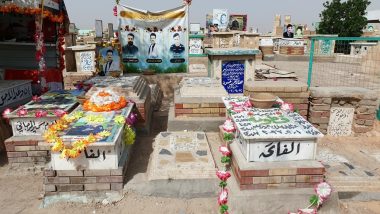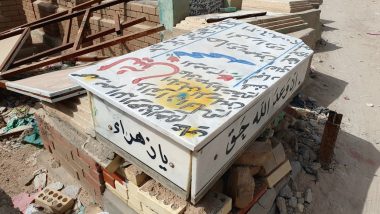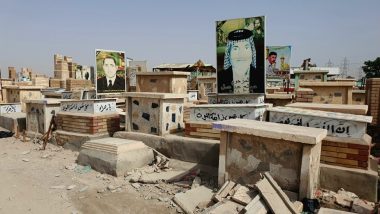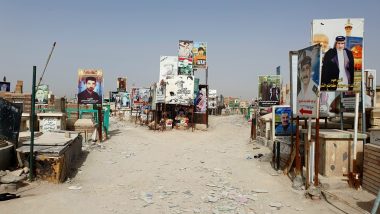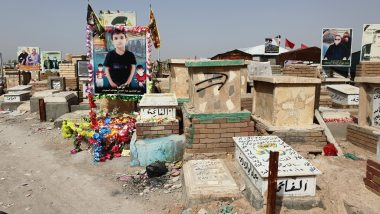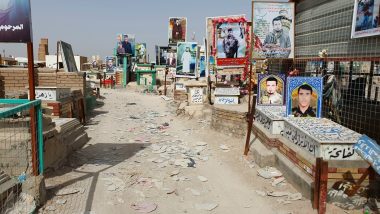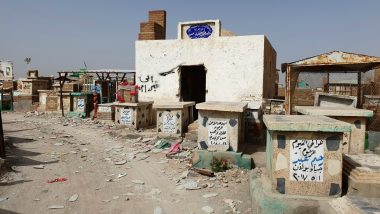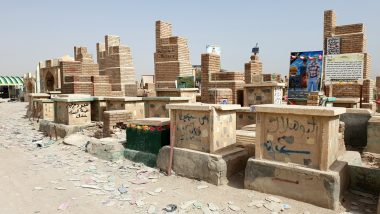We spent a night in another holy city, Al-Najaf. It lies on a ridge just west of the Euphrates River, about 160 kilometers south of Baghdad. It is one of Shiʿi Islam’s two major holy cities (the other is Karbalā) and is widely held to be the resting place of ʿAlī ibn Abī Ṭālib – Shiʿi Islam’s most-revered figure – whose tomb is located near the city’s center.
The caliph Hārūn al-Rashīd is reputed to have founded Najaf in 791 CE; its growth mainly occurred mostly after the 10th century. Because the city is home to the shrine of ʿAlī, it has remained a pilgrimage point for Shiʿiworldwidethe world. It has also traditionally been the starting point of the hajj for pilgrims en route from Iran to Mecca. The shrine’s dome is plated with gold, and the walls and roof are covered with polished silver, glass, and colored tiles. Unfortunately, the accumulated treasures of the shrine were carried off by Wahhābī raiders early in the 19th century.
In addition to its mosques, shrines, and religious schools, the city is known for its cemeteries. Outside the old city walls, over the barren sand plateau, stretch great fields of tombs and graves, for pious Shiʿis believe that Najaf is so holy that to be buried there is to ensure entry into paradise. In addition to the city’s population, there is frequently a large floating population of pilgrims, who sometimes bring the bodies of the deceased for interment or come with elderly and infirm family members who wish to live their last days in the holy city before being buried there. Political instability has sometimes interrupted the pilgrimage too. Still, during more-stable times, the number of those visiting the city can outstrip the local population in the proper season.
Parking location – Najaf: 32.029359N 44.305787E


